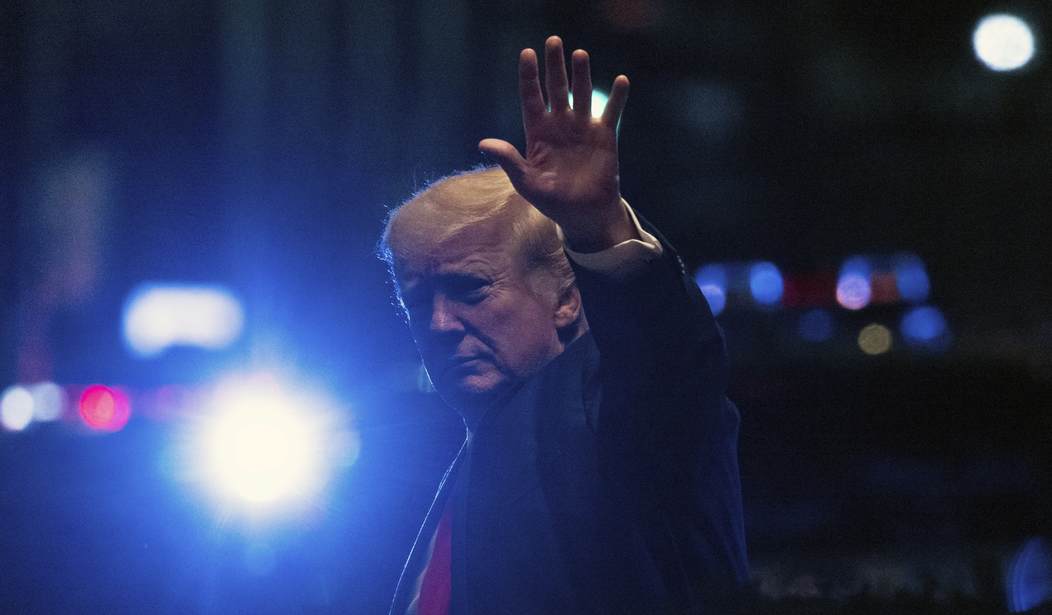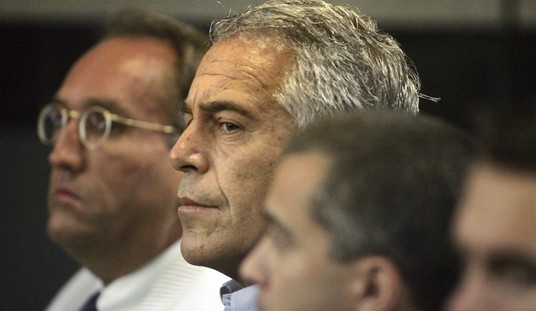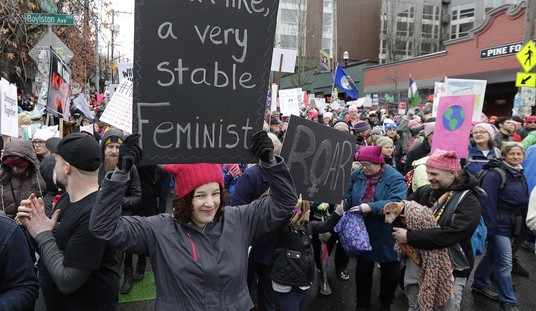Elon Musk has released the third installment of “The Twitter Files,” detailing the decision to ban former President Donald Trump after the Jan. 6, 2021 riot at the U.S. Capitol. Only a day after the company dropped the second installment related to the company’s content moderation practices, the company is now divulging the forces surrounding the decision to remove the former president from the platform.
What is noteworthy about this release is that it also discusses Twitter’s collaboration with the FBI and Department of Homeland Security (DHS) when it comes to moderating the platform. Journalist Matt Taibbi, who released the first part of the series, notes that “the internal communications at Twitter between January 6th-January 8th have clear historical import” and that the company’s employees “understood in the moment that it was a landmark moment in the annals of speech.”
5. Whatever your opinion on the decision to remove Trump that day, the internal communications at Twitter between January 6th-January 8th have clear historical import. Even Twitter’s employees understood in the moment it was a landmark moment in the annals of speech. pic.twitter.com/tQ01n58XFc
— Matt Taibbi (@mtaibbi) December 9, 2022
The journalist explains how Twitter executives “started processing new power” after they banned Trump and laid the groundwork for future decisions regarding the banning of presidents.” The employees said the Biden administration would “not be suspended by Twitter unless absolutely necessary.”
6. As soon as they finished banning Trump, Twitter execs started processing new power. They prepared to ban future presidents and White Houses – perhaps even Joe Biden. The “new administration,” says one exec, “will not be suspended by Twitter unless absolutely necessary.” pic.twitter.com/lr66YgDlGy
— Matt Taibbi (@mtaibbi) December 9, 2022
Twitter executives said they removed Trump because of the “context surrounding” the actions of Trump and his supporters throughout the 2020 election season.
7. Twitter executives removed Trump in part over what one executive called the “context surrounding”: actions by Trump and supporters “over the course of the election and frankly last 4+ years.” In the end, they looked at a broad picture. But that approach can cut both ways. pic.twitter.com/Trgvq5jmhS
— Matt Taibbi (@mtaibbi) December 9, 2022
Prior to the riot, the company employed a more “subjective moderation” approach.
9. Before J6, Twitter was a unique mix of automated, rules-based enforcement, and more subjective moderation by senior executives. As @BariWeiss reported, the firm had a vast array of tools for manipulating visibility, most all of which were thrown at Trump (and others) pre-J6.
— Matt Taibbi (@mtaibbi) December 9, 2022
Taibbi notes that after the riot, communications on Slack showed Twitter executives “getting a kick out of intensified relationships with federal agencies.”
The journalist goes on to discuss a Slack channel in which Twitter would converse about “election-related removals,” particularly related to “ accounts, which are called “VITs,” or “Very Important Tweeters.” He wrote:
On October 8th, 2020, executives opened a channel called “us2020_xfn_enforcement.” Through J6, this would be home for discussions about election-related removals, especially ones that involved “high-profile” accounts (often called “VITs” or “Very Important Tweeters”).
14. On October 8th, 2020, executives opened a channel called “us2020_xfn_enforcement.” Through J6, this would be home for discussions about election-related removals, especially ones that involved “high-profile” accounts (often called “VITs” or “Very Important Tweeters”). pic.twitter.com/xH29h4cYt9
— Matt Taibbi (@mtaibbi) December 9, 2022
The smaller group consisting of former CEO Jack Dorsey, former head of legal, policy, and trust Vijaya Gadde, and former cybersecurity head Yoel Roth, were a “high-speed Supreme Court of moderation,” according to Taibbi. They made content moderation decisions “on the fly, often in minutes and based on guesses, gut calls, even Google searches, even in cases involving the President.”
It appears these individuals did not put much thought into decisions to ban, or otherwise punish, accounts tweeting views with which they disagreed.
16. The latter group were a high-speed Supreme Court of moderation, issuing content rulings on the fly, often in minutes and based on guesses, gut calls, even Google searches, even in cases involving the President. pic.twitter.com/5ihsPCVo62
— Matt Taibbi (@mtaibbi) December 9, 2022
Meanwhile, these executives were “clearly liasing” with federal agencies regarding the moderation of content related to the 2020 election.
17. During this time, executives were also clearly liaising with federal enforcement and intelligence agencies about moderation of election-related content. While we’re still at the start of reviewing the #TwitterFiles, we’re finding out more about these interactions every day.
— Matt Taibbi (@mtaibbi) December 9, 2022
In fact, Roth met weekly with officials from the FBI and DHS, and also the Office of the Director of National Intelligence (DNI).
This post about the Hunter Biden laptop situation shows that Roth not only met weekly with the FBI and DHS, but with the Office of the Director of National Intelligence (DNI):
20. This post about the Hunter Biden laptop situation shows that Roth not only met weekly with the FBI and DHS, but with the Office of the Director of National Intelligence (DNI): pic.twitter.com/s5IiUjQqIY
— Matt Taibbi (@mtaibbi) December 9, 2022
In a report to these three agencies, Roth wrote:
We blocked the NYP story, then we unblocked it (but said the opposite) … and now we’re in a messy situation where our policy is in shambles, comms is angry, reporters think we’re idiots, and we’re refactoring an exceedingly complex policy 18 days out from the election.
21. Roth’s report to FBI/DHS/DNI is almost farcical in its self-flagellating tone:
“We blocked the NYP story, then unblocked it (but said the opposite)… comms is angry, reporters think we’re idiots… in short, FML” (fuck my life). pic.twitter.com/sTaWglhaJt— Matt Taibbi (@mtaibbi) December 9, 2022
The FBI even sent Twitter reports highlighting certain tweets, one of which involved Indiana Councilor and Republican named John Basham in which he said: “Between 2% and 25% of Ballots by Mail are Being Rejected for Errors.”
24. Here, the FBI sends reports about a pair of tweets, the second of which involves a former Tippecanoe County, Indiana Councilor and Republican named @JohnBasham claiming “Between 2% and 25% of Ballots by Mail are Being Rejected for Errors.” pic.twitter.com/KtigHOiEwF
— Matt Taibbi (@mtaibbi) December 10, 2022
Twitter decided that these tweets were “proven to be false” and that one of them was “no vio on numerous occasions.”
25. The FBI-flagged tweet then got circulated in the enforcement Slack. Twitter cited Politifact to say the first story was “proven to be false,” then noted the second was already deemed “no vio on numerous occasions.” pic.twitter.com/LyyZ1opWAh
— Matt Taibbi (@mtaibbi) December 10, 2022
What is also noteworthy is that the journalists did not “see one reference to moderation requests from the Trump campaign, the Trump White House, or Republicans generally.”
27. Examining the entire election enforcement Slack, we didn’t see one reference to moderation requests from the Trump campaign, the Trump White House, or Republicans generally. We looked. They may exist: we were told they do. However, they were absent here.
— Matt Taibbi (@mtaibbi) December 10, 2022
The company also prepared to put a “mail-in voting is safe” warning label on a tweet from Trump calling out a voting mishap in Ohio that involved mail-in ballots. They decided against it after realizing that “the events took place” which means the former president’s tweet was “factually accurate.”
35. In another example, Twitter employees prepare to slap a “mail-in voting is safe” warning label on a Trump tweet about a postal screwup in Ohio, before realizing “the events took place,” which meant the tweet was “factually accurate”: pic.twitter.com/4r6nJ3JDmY
— Matt Taibbi (@mtaibbi) December 10, 2022
Even more damning is that Trump was “visibility filtered” about a week before the election despite not appearing “to have a particular violation.” Employees worked quickly to ensure that any of Trump’s tweets could not be “replied to, shared, or liked.”
Taibbi indicated at the beginning of the thread that more drops would be coming on Saturday and Sunday further explaining the decision to ban Trump as well as other issues. Journalists Bari Weiss and Michael Shellenberger are expected to handle the next batch of information.














Join the conversation as a VIP Member